From the bear who became a soldier during World War II to the sideshow entertainer who saved 6,500 babies, all of these incredible stories actually happened.
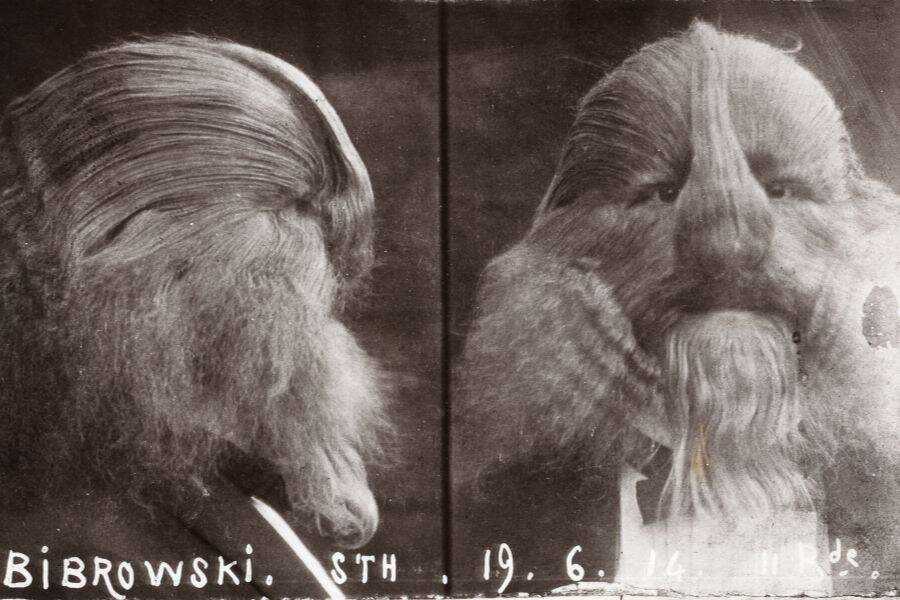
Getty ImagesOne of the weird history facts below features the story of Stephan Bibrowski, a 20th-century sideshow performer who spoke five languages, had a gentlemanly demeanor, and dreamt of becoming a dentist.
History is full of strange moments, people, and places. And as this list of weird history facts proves, every era contains its oddities.
Below, discover the surprising stories of 19th-century mummy sellers in Egypt, Julia Child’s astonishing past as an intelligence officer, how mysterious glowing bacteria saved the lives of Civil War soldiers, and more.
Bran Castle In Transylvania Is Called “Dracula’s Castle” Because It Once Allegedly Held The “Real” Dracula, Vlad The Impaler.
In Romania, there’s a storybook castle with a bloody reputation. Bran Castle, located in the central part of the country, once allegedly held Vlad III, better known as Vlad the Impaler, as a prisoner. A brutal 15th-century ruler of Wallachia, Vlad the Impaler is widely believed to have been the inspiration for the fictional Dracula, who first appeared in Bram Stoker’s 1897 novel.

Sean Gallup/Getty ImagesBran Castle was constructed in the 14th century and draws vampire fans to this day.
Vlad the Impaler’s connections to the castle are admittedly murky. Most historians agree he never ruled over the fortress, and some sources question whether he was even held prisoner there. However, the ruler’s gruesome reputation is well known. During his reign, he killed some 80,000 people and impaled 20,000 of them, earning himself his infamous nickname. He may have even dipped his bread in the blood of his impaled enemies.
So, despite the castle’s dubious links to both Vlad the Impaler and Stoker’s famous book, Bran Castle has become a tourist draw in recent years.
The U.S. Army Cut Down The “Mark Twain Tree” In California Because People Elsewhere Didn’t Believe That Trees Could Grow So Big.
In 1891, the U.S. Army arrived in California with a mission. In today’s Kings Canyon National Park, soldiers approached a giant sequoia tree that had been dubbed the “Mark Twain Tree” — and promptly cut it down.
The tree, which stood 331 feet tall and stretched 16 feet in diameter, had inspired wonder and doubt from those who had heard about it. Since many people elsewhere didn’t believe trees could grow so big, the U.S. Army brought slices of the Mark Twain Tree back to the East Coast and Europe, where it was displayed at museums in New York and London.
Today, only its stump remains in Kings Canyon National Park.
In 1991, Two Tourists Stumbled Upon A 5,300-Year-Old Mummified Murder Victim In The Alps.
On September 19, 1991, German tourists Helmut and Erika Simon were navigating the Austro-Italian Alps when they came upon the skeletal remains of a man partially preserved in the ice. Convinced they’d come across the victim of a recent mountaineering accident, they contacted the police.
But the dead man’s identity was more shocking than they realized. A subsequent investigation revealed that the man had actually died some 5,300 years earlier — and he was likely the victim of a murder.
According to the South Tyrol Museum of Archaeology, the ancient man — dubbed Ötzi the Iceman — died after being shot in the back with an arrow.
This Shattered Breastplate Represents The Final Moments Of A French Soldier Who Was Killed During The Battle Of Waterloo.

Musée de l’ArméeA tragic and weird fact from French history, this piece of armor captures the aftermath of a cannonball.
On June 18, 1815, French forces arrived near the town of Waterloo in present-day Belgium to fight for Napoleon. Tens of thousands of them perished that day, including the unlucky soldier who wore the breastplate above.
According to the Fondation Napoléon, the soldier wearing the breastplate was struck and killed by a cannonball, making him one of the 40,000 casualties suffered by the French during the pivotal battle.
Records state that his name was François Antoine Fauveau, a 23-year-old dairyman, who had been incorporated into the army a month earlier. However, the Fondation Napoléon notes that the Fauveau family claims that it wasn’t François who fought for Napoleon, but his brother.
Nineteenth-Century Europeans Purchased Egyptian Mummies So That They Could Hold Victorian “Mummy Unwrapping Parties.”
The Victorian era was filled with weird history facts, like the use of arsenic skincare products and the practice of wife selling. But one of the strangest traditions from the time period was the “mummy unwrapping party.”
According to The Conversation, Napoleon’s expedition into Egypt in 1798 inspired renewed European interest in the country. Europeans flocked to Egypt and found they could purchase whole mummies from street vendors.
Though some brought mummies home to display medically, others bought them for rowdy parties in the 19th century. There, Victorians gathered around as the mummy was slowly unwrapped, reacting with horror and delight.
Bizarre History Facts: A Group Of Polish Troops Adopted A Bear Cub Into Their Unit During World War II.

The Polish Institute and Sikorski Museum – LondonWojtek the bear’s military service is one of the weirdest facts from World War II history.
While on their way to join up with British troops during World War II, Polish soldiers came across an orphaned bear cub in Iran. Incredibly, they decided to adopt the cub, name him Wojtek, and enlist the animal into their unit.
The bear, whose name translates to “joyous soldier,” started out drinking milk, but he soon started drinking beer like his human companions — and eating cigarettes. A year later, in 1943, the soldiers made him a private of the Polish II Corps (with a rank, service number, and pay book).
Wojtek survived the war. He was later moved to a farm in Scotland followed by a zoo, where he reportedly lived out the rest of his days in peace.
Freddie Mercury Delighted Fans By Appearing On Darth Vader’s Shoulders During Shows.
There’s a popular photo on the internet that captures a unique moment in time — Queen frontman Freddie Mercury sitting on the shoulders of Star Wars villain Darth Vader. According to the photographer, Tom Callins, the moment in question occurred on August 10, 1980, in Houston, Texas.
“It was during the encore, and it was during ‘We Will Rock You,'” Callins told the AV Club. “And he came out sitting on Darth’s shoulders. I guess it was a shtick he did that tour because I’ve seen other photos of other shows.”
Callins added of his famous photograph: “But I just happened to be at the right angle at the right place in front of the stage to get the shot.”
A Photographer Captured The Moment An English Electric Lightning F1 Plane Dropped From The Sky.
The last photo of a doomed English Electric Lightning F1 aircraft captures a shocking moment in history. On September 19, 1962, photographer Jim Meads had planned to take a picture of the plane as it landed. But he never expected to see the jet bomber nosedive down into a field in Hatfield in England.
According to the site Fear of Landing, Meads and his children were waiting to watch the plane when, unbeknownst to them, the test pilot ran into trouble. The plane had become uncontrollable due to an engine fire, so the pilot ejected from the plane. Meads raised his camera — and happened to catch the plane in the nosedive and the recently ejected pilot in the shot.
Fortunately, the pilot survived the fall. However, he did end up crashing through a greenhouse and needed to be treated for two broken legs.
Weird History Facts: Robin Williams Once Appeared As A Broncos Cheerleader During A Game.
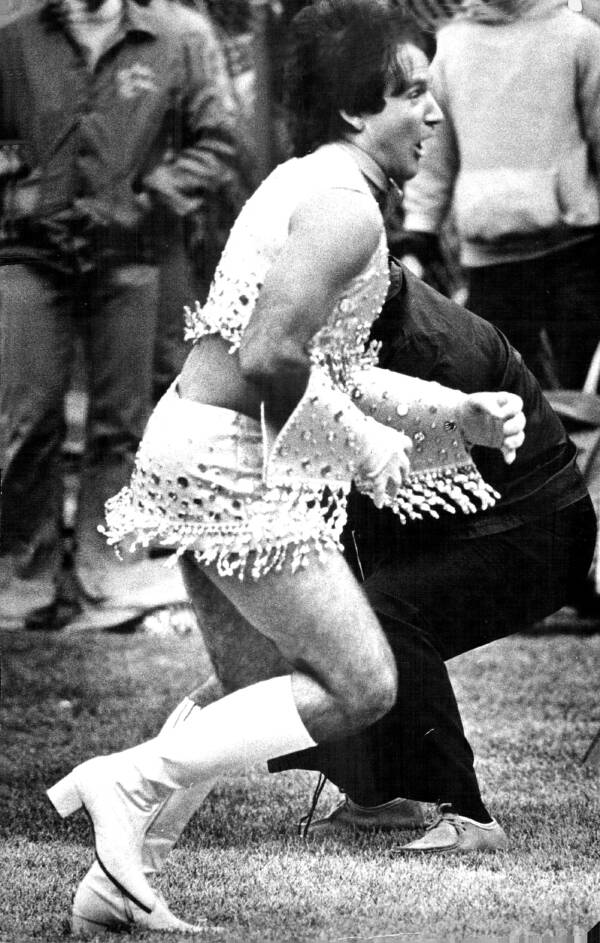
Denver Post via Getty ImagesRobin Williams delighted Broncos fans by appearing as a Broncos cheerleader in 1979.
During a Broncos vs. Patriots football game in 1979, tens of thousands of spectators were treated to a special surprise as the Broncos cheerleaders emerged at Mile High Stadium in Denver. In their midst was the beloved actor Robin Williams, dressed in a short skirt and knee-high boots.
According to Yahoo, Williams was starring as Mork in the show Mork and Mindy at the time of the stunt. His humorous appearance as a Broncos cheerleader later became a plot point on the Colorado-based sitcom.
Bars In Turkey Used To Hire People To Carry Drunk Customers Home In Baskets.
If you wandered the streets of Turkey in the 1960s, you may have come across a surprising sight: a belligerent drunk, being carried in a basket on the back of a hunched man. According to Vintage News Daily, these basket carriers were called küfeci — and they were paid to do this.
Though it’s one of the weirdest facts from history, the küfeci’s job was relatively simple. Bars would hire these men, who were often porters during the day, to carry home drunk customers at night. Their name comes from the Turkish word küfe, which means being too drunk to walk.
A 19th-Century Black Domestic Worker Made Herself A Millionaire By Listening To Her Wealthy Clients Swap Investment Tips.
Though much about her early life remains a mystery, Mary Ellen Pleasant found herself working as a cook in San Francisco in the 1850s. Pleasant’s first husband had left her a decent inheritance before he died, so she learned how to invest it by eavesdropping on her wealthy clients.
It worked. The Black domestic worker soon amassed millions, bought up properties, and proudly listed herself as a “capitalist” in the 1890 census. But she also used her massive riches to help other Black Americans.
Declaring that she’d rather be a “corpse than a coward,” Pleasant funneled her money to the Underground Railroad, fought back against racial discrimination in the country, and may have even given abolitionist John Brown $30,000 to conduct his failed 1859 raid on Harpers Ferry in Virginia.
“Mercy Dogs” Were Employed During World War I To Comfort Wounded And Dying Soldiers.
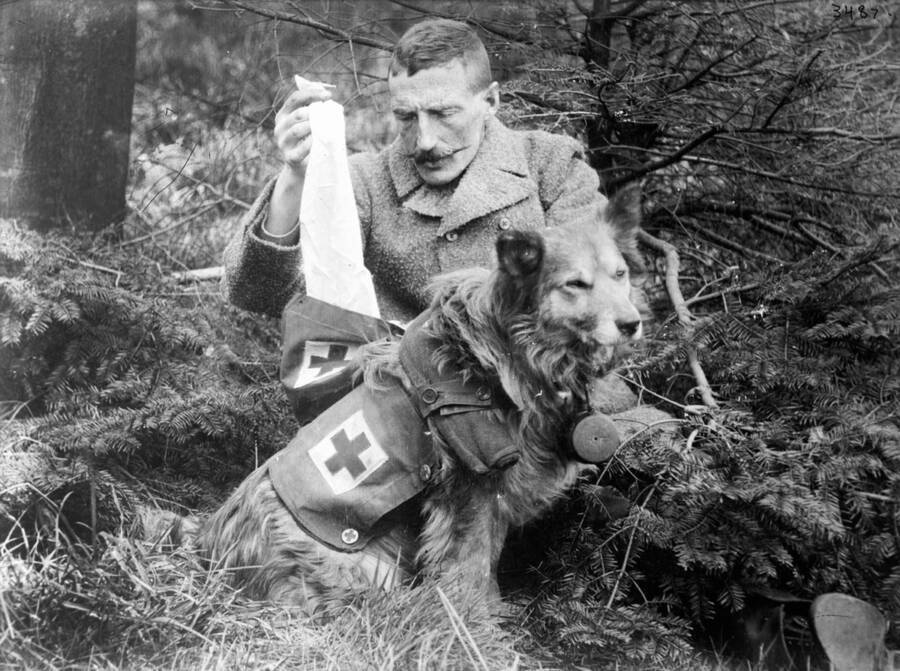
Library of CongressA soldier takes gauze from the medical pack of a British mercy dog.
During World War I, soldiers on both sides of the conflict employed some 50,000 dogs as “mercy dogs.” These canines had a very important job in the military — to find and help wounded men on the battlefield.
Carrying medical supplies on their backs, they sought out injured soldiers. If a soldier was gravely wounded, the dogs would tear off a piece of his uniform, carry it back to camp, and help other soldiers to locate the man.
Sometimes, the dogs found men who were beyond saving. In that case, they lay down next to him, so that the dying soldier didn’t have to die alone.
Before Becoming A Celebrity Chef, Julia Child Worked For The Precursor To The CIA.
Julia Child is best known as one of America’s first celebrity chefs. But before she became a culinary star, Child worked for the Office of Strategic Services (OSS), the predecessor to today’s Central Intelligence Agency (CIA).
According to the Office of the Director of National Intelligence, Child worked with the OSS Emergency Sea Rescue Equipment Section. At the time, the OSS needed to find a solution for sharks setting off underwater explosives and attacking downed pilots. So Child put her skills to work.
She and her team eventually developed a shark repellant, which was coated on underwater explosives and pilots’ life vests, saving countless lives. Later, Child joked that the repellant was her “first recipe.”
A 20th-Century Norwegian Adventurer Sailed Thousands Of Miles In A Homemade Raft.
Thor Heyerdahl was fascinated by patterns he noticed between ancient cultures. Common traditions seemed like more than a coincidence to him. So the Norwegian adventurer built a simple raft to prove that ancient cultures could have interacted with each other across oceans.
In 1947, Heyerdahl sailed 4,300 miles from Peru to French Polynesia in a raft called Kon-Tiki, which was made of balsa logs and hemp rope. After 101 days, he and his small crew arrived successfully at their destination, proving, in Heyerdahl’s mind, that ancient people could have done the same.
He embarked on two more similar voyages during his life. In 1970, Heyerdahl sailed 4,000 miles from Morocco to Barbados in a reed boat. And in 1977, he sailed down the Tigris River, down the Persian Gulf, and across the Arabian Sea before being forced to end his journey in the Red Sea due to local turmoil. But despite these trips, he couldn’t prove anything definitive.
A Man Saved Over 6,500 Babies In The Early 20th Century — By Exhibiting Them In A Sideshow.
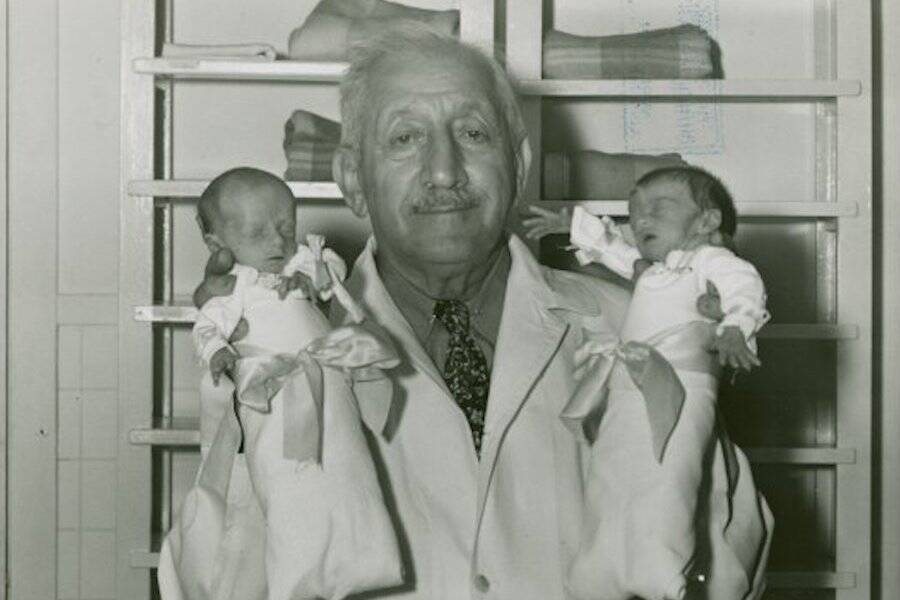
New York Public LibraryThough the story of Martin Couney is a weird fact from history, it’s also very heartwarming.
During the early 20th century, most prominent physicians believed that premature babies were weak and not meant to survive. But Martin Couney, an immigrant from present-day Poland, had other ideas.
Inspired by the early incubators he saw at other fairs, Couney decided to display “child hatcheries” as a sideshow on Coney Island, starting in the early 1900s. For 25 cents, visitors to the theme park could gaze upon rows upon rows of children, warming up in Couney’s incubators.
Though doctors had their doubts, Couney’s incubators saved more than 6,500 babies, and they were eventually used by hospitals across America.
Sideshow Performer “Lionel The Lion-Faced Man” Just Wanted To Be A Dentist.
Speaking of sideshows, another weird history fact has to do with sideshow star “Lionel the Lion-Faced Man,” a young man whose hypertrichosis condition resulted in dramatic hair growth on parts of his body that wouldn’t usually be covered in hair, like his face. His real name was Stephan Bibrowski, and he dreamt of more than performing in “freak shows.”
In fact, Bibrowski was a man of many talents. Gentle by nature, the Polish-born Bibrowski spoke five languages and once dreamed of being a dentist.
But even though he spent his life on the sideshow circuit, Bibrowski seemed to accept the cards that life had dealt him. After narrowly escaping a fire in New York City, he allegedly claimed that if his excess hair was burned off by the flames, he’d be condemned to be “just be an ordinary man.”
After His Presidency, Jimmy Carter Moved Back Into His Two-Bedroom Home In Georgia.
As president, Jimmy Carter was never interested in the more luxurious trappings of his office. He wore a $175 business suit to his inauguration, carried his own bags, and refused to have “Hail to the Chief” played when he walked into a room. And his modest nature extends to his house.
When he was elected president in 1976, Carter left behind his humble home in Plains, Georgia, which he and his wife Rosalynn had built. And when his presidency ended four years later, Carter returned to the same house.
Carter and his wife live there to this day. Their home was valued at just $167,000 in 2018, less than the Secret Service vehicles parked outside.
Jack Black’s Mother Was A NASA Engineer Who Helped Save Apollo 13.
Jack Black is a well-known actor. But his mother, Judith Love Cohen, had an impressive career all her own as an aerospace engineer at NASA.
A trailblazing innovator, Cohen worked on the guidance computer for the Minuteman missile, the Abort Guidance System in the Lunar Excursion Module for the Apollo space program, the ground system for the Tracking and Data Relay Satellites, and other important devices.
But Cohen always considered her work for the Apollo space program as the “highlight of her career,” according to one of her other sons, Neil Siegel. When the Apollo 13 crew lost power in April 1970, the astronauts onboard used Cohen’s Abort Guidance System to navigate their way safely back to Earth.
This Girl Was Abducted By Native Americans — And Bore An Indigenous Tattoo For Life.
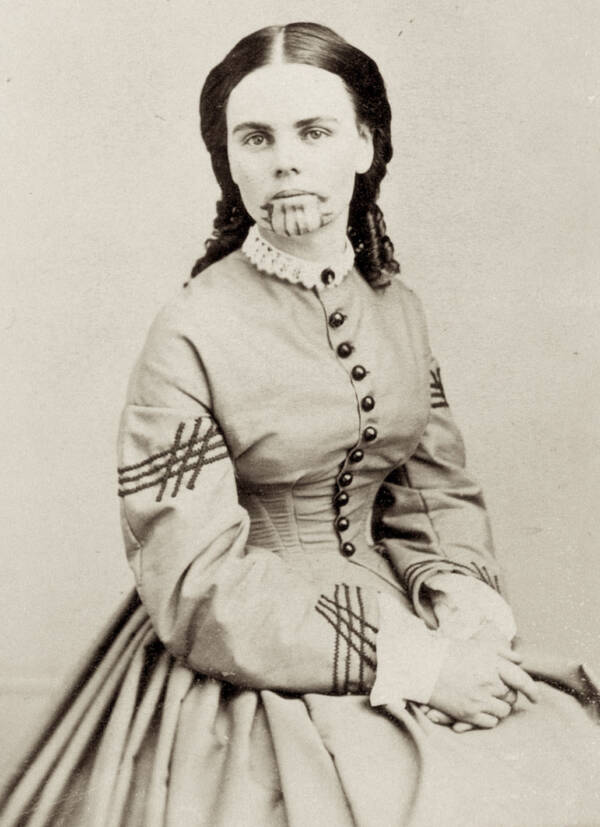
Public DomainAfter her abduction, Olive Oatman routinely wore a veil to cover her facial tattoo.
In 1850, a 14-year-old girl named Olive Oatman set out with her Mormon family on a journey to California. But in early 1851, as they traversed present-day Arizona, the Oatman party was attacked by Native Americans.
Olive and her younger sister were taken by members of the Yavapai tribe, who soon traded them to the Mohave for two horses. Among the Mohave tribe, Olive and her sister were accepted as tribal members. They were even given tattoos on their chins and arms — because the Mohave believed that these tattoos would allow them to enter the land of the dead.
Though Olive’s sister died from starvation during a period of drought, Olive continued to live among the Mohave tribe. She remained with them until she was 19 years old — when white military men learned that she was staying with the tribe and demanded that she be brought to Fort Yuma. Though she soon reentered white society, she bore the tattoo on her chin for the rest of her life. But later in her life, she usually covered it with a veil.
A Mysterious Phenomenon Called “Angel’s Glow” Saved Civil War Soldiers After A Deadly Battle.
After the Civil War’s Battle of Shiloh, which caused 23,000 total casualties, some wounded soldiers started to emit a greenish-blue glow. Though no one knew why they glowed, doctors noticed that the soldiers who had the glow seemed to recover faster — and dubbed the phenomenon “Angel’s Glow.”
Almost 140 years later, the mystery behind this weird fact from history was solved. In 2001, a high school student named Bill Martin (and his microbiologist mother Phyllis) looked into the phenomenon and discovered it was likely caused by a bacterium called Photorhabdus luminescens.
Not only did the Photorhabdus luminescens bacterium glow, but it also likely contributed to the soldiers’ recovery, as it probably consumed other bacteria or pathogens that the men picked up on the battlefield.
Vietnam War POW Jeremiah Denton Used Morse Code To Blink Out “Torture” On Camera.
On July 18, 1965, U.S. Navy Commander Jeremiah Denton was shot down and captured by North Vietnamese troops while fighting in the Vietnam War. Held in prison camps, including the notorious “Hanoi Hilton,” Denton was beaten, starved, and tortured. But still, Denton remained defiant.
About 10 months after his capture, he was forced to sit for a propaganda interview on camera. Not only did Denton declare his enduring support to the United States, but he also blinked out the word “torture” in Morse Code to communicate what he and other POWs had suffered in Vietnam.
He was released in 1973 and died at the age of 89 in 2014.
Danish Explorer Ejnar Mikkelsen Survived Two Winters Trapped In The Arctic.
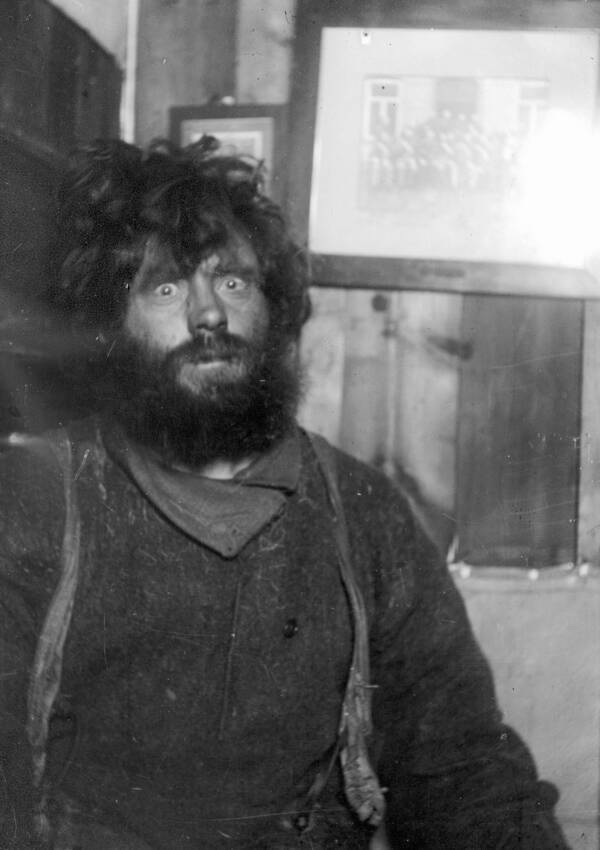
Arktisk Institut/Public DomainEjnar Mikkelsen in 1912, after spending two winters in the Arctic.
In 1909, Danish explorer Ejnar Mikkelsen set out to explore the coast of Greenland, hoping to prove the Danish right to an island that the United States had claimed. But soon afterward, Mikkelsen’s ship became ensnared in ice — trapping him and a fellow shipmate named Iver Iversen in the Arctic.
As Mikkelsen wrote in his autobiography Two Against the Ice, they spent two winters struggling to survive after being abandoned by the rest of their shipmates, who had left on another vessel. He and Iversen resorted to eating their sled dogs, battled predatory wildlife, and grappled with their sanity.
In 1912, they were finally found by a Norwegian steamer — alive.
The Iconic Cartoon “Betty Boop” Was Largely Inspired By A Black Child Performer.
Though Betty Boop is a well-known cultural icon, the famous cartoon was largely based off a Black child performer named Esther Jones. She’s not well known today, but in the 1920s, Jones delighted American and European audiences with her singing, dancing, and catchphrase “Boop, Boop-a-Doop.”
But her act was taken by a white actress named Helen Kane. And Kane became so famous using Jones’ act that when the Betty Boop cartoon debuted in 1930, it essentially copied Kane — and Jones’ — mannerisms.
Kane sued Max Fleischer, the creator of Betty Boop, but it was ultimately proven in court that the act originated from Esther Jones, not Kane herself. Despite that, little is known about Jones’ life after the 1920s.
In The 1958 “Battle Of Hayes Pond,” Native Americans Triumphed Over KKK Members.
In 1958, Ku Klux Klan member James William “Catfish” Cole led the KKK to Maxton, North Carolina, where he hoped to intimidate the largely Native American population. But members of the Lumbee tribe had other plans.
After the KKK publicized their rally, the members gathered in a cornfield near Hayes Pond, just outside of Maxton, on January 18th. They were promptly confronted by members of the Lumbee, some of whom had fought in World War II. And the Native Americans soon outnumbered the KKK.
In the ensuing Battle of Hayes Pond, the Lumbee soundly triumphed over the KKK, stealing their banner to display after their victory.
Calvin Graham Enlisted In The U.S. Navy During World War II — At The Age Of 12.
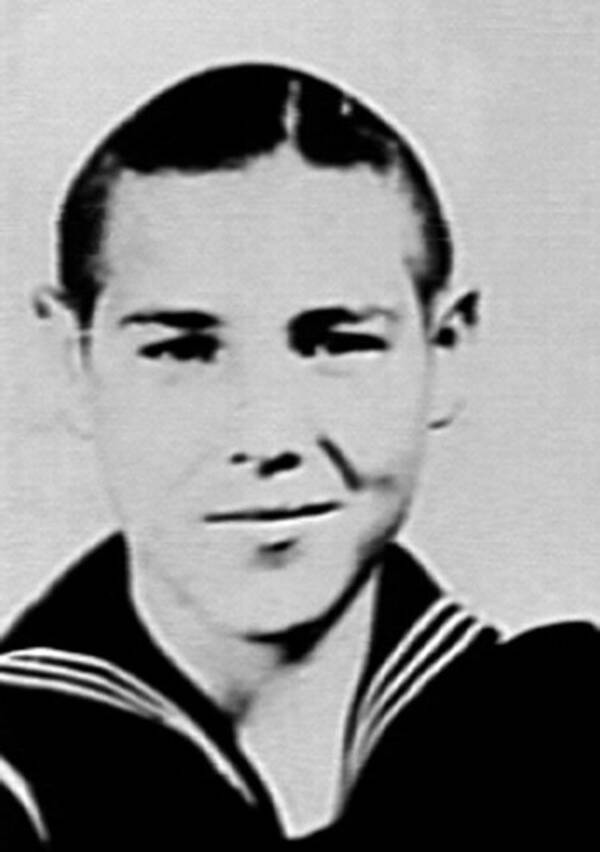
U.S. Navy/Public DomainA photo of Calvin Graham during his service with the U.S. Navy, capturing a weird yet inspiring fact from history.
When Calvin Graham was 11 years old, he decided that he wanted to fight in World War II. According to the Smithsonian Magazine, Graham “didn’t like Hitler to start with.” And the boy was further inspired to fight when he learned that some of his cousins had already died in battle.
So Graham, who lived in a rooming house with his brother, practiced “talking deep” and started shaving. Then, he forged his mother’s signature and met with military recruiters, who allowed him into the U.S. Navy. He was just 12 when he joined — an astounding fact from World War II history.
After telling his mother he was visiting relatives, Graham went to San Diego for basic training and set out on the USS South Dakota. Though he served bravely and earned a Bronze Star and a Purple Heart, Graham’s mother eventually recognized him in news footage and brought him home.
Three Triplet Boys Were Separated At Birth, But Their Reunion Was Complicated.
When three triplet boys named Edward “Eddy” Galland, David Kellman, and Robert “Bobby” Shafran, were born in New York in 1961, they were each given away to different families. But in 1980, Bobby ended up at the same college that Eddy had dropped out of the previous year. They were soon reunited, and then David got in touch months later — revealing that they were triplets.
Their strange story didn’t end there. Despite having never met each other before then, the boys had eerily similar mannerisms and had even lost their virginity at the same age. What’s more, it was later revealed that they had been part of a psychological study on nature vs. nurture as children.
Though David and Bobby are still in contact today, Eddy tragically struggled to cope with the revelation that he was a triplet and the strained relationship that he continued to have with his adoptive father. Suffering from manic depression, he ultimately died by suicide in 1995 at age 33.
A Man Grew An Entire Self-Contained Ecosystem With One Spiderworts Plant.
In the 1960s, David Latimer conducted an unusual experiment. After cleaning out a globular bottle, the English man filled it with compost and a seedling. Latimer gave it a little water then, and a little more water years later in 1972. The seedling then grew its own self-sustained ecosystem. It’s a weird fact from recent history, but according to Latimer, it makes perfect sense.
“It’s six feet from a window so [it] gets a bit of sunlight,” Latimer told the Daily Mail. “It grows towards the light so it gets turned round every so often so it grows evenly. Otherwise, it’s the definition of low maintenance. I’ve never pruned it, it just seems to have grown to the limits of the bottle.”
Indeed, Latimer’s experimental plant can survive thanks to its access to sunlight. Using photosynthesis, the bottling plant receives energy, which also creates oxygen and moisture in the bottle, which “rains” back down.
Locals In Turkey Honored A Beloved Istanbul Cat By Creating A Statue In His Memory.
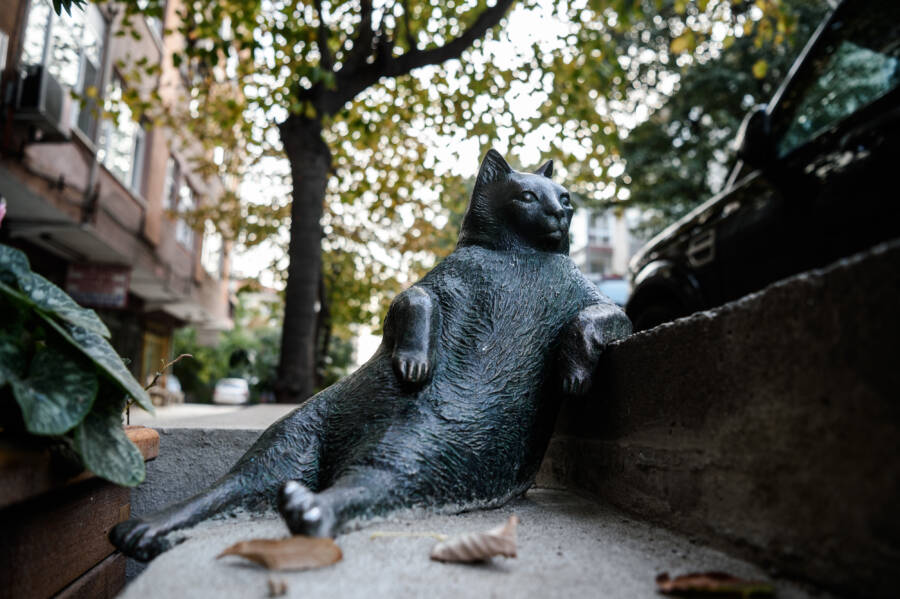
OZAN KOSE/AFP via Getty ImagesA bronze statue of Tombili the cat captures the feline’s famous slouch.
There’s a peculiar statue in Istanbul’s Ziverbey neighborhood in Turkey. There, locals have erected a bronze homage to a chubby cat named Tombili, who was beloved among the locals for his calm and relaxed demeanor.
According to the Independent, Tombili, whose name is a Turkish word used for overweight pets, delighted people in the neighborhood with his friendliness, and internet users with viral photos of his funny way of sitting.
When he died in 2016, thousands of people signed a petition asking for a bronze sculpture of Tombili. And a local sculptor agreed.
A Mummy Was Once Issued A Passport So It Could Fly To France For Repairs.
In 1974, the mummy of Pharaoh Ramses II — who died around 1213 B.C.E. — was in need of restoration work. Because French law required every person, living or dead, to have a passport to enter France, Egypt issued him one.
According to National Geographic, the passport included a photo of Ramses II’s ancient, shriveled face, and listed his occupation as “King (deceased).”
But although “photos” of the passport have circulated online, those images are an artistic representation. Actual photos of the pharaoh’s passport were never released, leaving this weird fact from history up for interpretation.
Whiskey Vending Machines Were Briefly A Thing In The 1960s.
Vending machines are ubiquitous in the United States today and provide refreshments like soda, water, and snacks. But back in the 1960s, some salesmen actually tried to make whiskey vending machines a thing.
According to USA Today, whiskey vending machines appeared at the Second Automatic Vending Exhibition in London in 1960, where people could get a whiskey soda for two shillings and sixpence. Nearby, interested parties could also test out vending machines that offered gin and tonics and rum toddies.
However, whiskey vending machines never became mainstream — and they certainly weren’t ever used in offices as some online posts suggest.
One Small Canadian Town Took In Thousands Of Stranded Passengers On 9/11.
In the aftermath of the 9/11 terror attacks in the United States, authorities shut down American airspace. Hundreds of planes were diverted to Canada, including to the small town of Gander. Though the town had a population of just 10,000 people, it agreed to take in 38 stranded flights.
Because the town didn’t have enough hotel space to house the 7,000 stranded passengers, the community stepped up. On local TV, residents were urged to “lend a hand, do what you can.” And they did.
According to the 9/11 Memorial & Museum, passengers were invited to stay in schools, churches, and even residences. Pharmacies offered free prescriptions for people who needed them, locals donated food and clothing, and passengers were able to call home for free.
There Are 12 Replicas Of The Iconic Statue Of Liberty In France.
New York City’s Statue of Liberty is one of the most famous symbols of the United States. But the statue itself was a gift from the French. And one weird fact from French history is that they also have 12 replicas of the iconic sculpture in their country as well. According to The Local, the replicas are located in cities like Paris, Bordeaux, Saint-Cyr-sur-Mer, and Barentin.
Only One Person In History Has Been Hit By A Meteorite — And She Survived.
On November 30, 1954, Ann Hodges was fast asleep in her Alabama home when an 8.5-pound meteorite crashed through her roof, banged against her radio set, and smashed into her side. Miraculously, the 34-year-old survived.
“We had a little excitement around here today,” Ann Hodges said, as reported by the Smithsonian. “I haven’t been able to sleep since I was hit.”
Hodges eventually donated the meteorite to the Alabama Museum of Natural History. But her 15 minutes of fame (thanks to this weird fact from history) allegedly led to health problems and the collapse of her marriage.
The Bombs Dropped On Hiroshima And Nagasaki Were So Powerful That They Killed Thousands — And Left “Shadows” On The Ground.

Universal History Archive/Getty ImagesThis eerie shadow captures the moment that an atomic bomb hit Hiroshima in August 1945.
The bombs dropped on Hiroshima and Nagasaki in August 1945 at the end of World War II killed as many as 226,000 people. And they also left an eerie mark on the landscape — shadows on the pavement of people and items like bicycles, frozen in time from when the bombs had dropped.
According to Live Science, this phenomenon occurred because the light and heat from the bombs had been absorbed by people and objects in front of where the “shadows” were. The surrounding light and heat from the bombs ended up bleaching most of the ground. A chilling and weird fact from history, the “shadows” represented the true color of the pavement.
A 17th-Century Swedish King Ordered The Construction Of An Impressive Warship — Which Promptly Sank On Its Maiden Voyage.
In 1628, excited crowds gathered in Stockholm, Sweden, to watch the ship Vasa launch. The warship had been specially commissioned by Swedish king Gustav II Adolf, who wanted a vessel that would strike fear into the hearts of his enemies. But instead, the Vasa sank after 20 minutes at sea.
Today, experts have theorized that the Vasa sank because the king rushed its construction and because it carried too many gun cannons. It had 64 onboard at the time of its sinking but was originally supposed to carry 36.
The warship sat at the bottom of Stockholm Harbor for well over 300 years. In the early 1960s, Sweden launched an effort to resurface Vasa, and the preserved vessel is on display at Stockholm’s Vasa Museum today.
Nikola Tesla Had An Obsession With The Numbers 3, 6, And 9.
Nikola Tesla allegedly once said: “If you only knew the magnificence of the 3, 6, and 9, then you would have a key to the universe.”
Whether or not the famous inventor truly said this is up for debate, but Tesla did exhibit an obsession with the numbers 3, 6, and 9. He’d walk three times around the block before entering his building, wash his dishes with 18 napkins (because 18 is divisible by all three of his favorite numbers), and only stay in hotel rooms with a room number that was divisible by three.
In 1943, Tesla died at age 86 at the New Yorker Hotel — in Room #3327.
The Crew Of The HMS Terror Perished — And The Arctic Ice Preserved Their Remains.
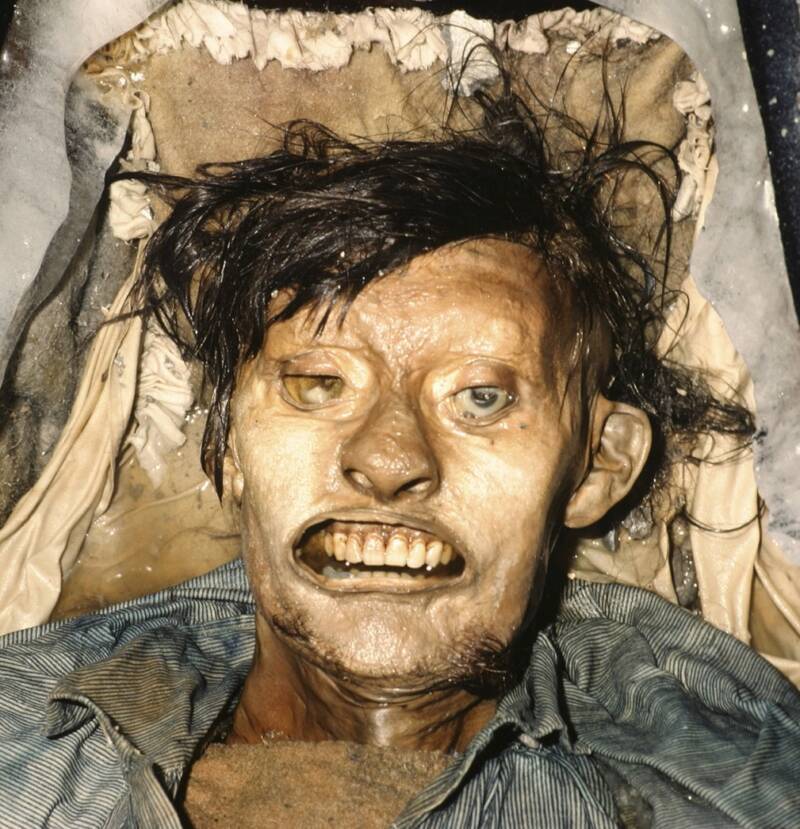
Brian SpenceleyJohn Hartnell, a crewmember whose well-preserved body was found on Beechey Island in the 1980s.
In 1845, the HMS Terror set sail in search of the Northwest Passage — and vanished. Well over a century later, many of the crewmen’s well-preserved bodies were discovered in the Arctic ice in the 1980s and 1990s.
Their skin, clothing, and even eyes are intact — painting a chilling picture of the last moments of the doomed crew. In 2016, the wreck of the HMS Terror itself was also found, though mysteries remain about its final days.
After looking through these 37 weird history facts, enjoy these facts about ancient history. Or, delve into these fascinating facts about Black history.





